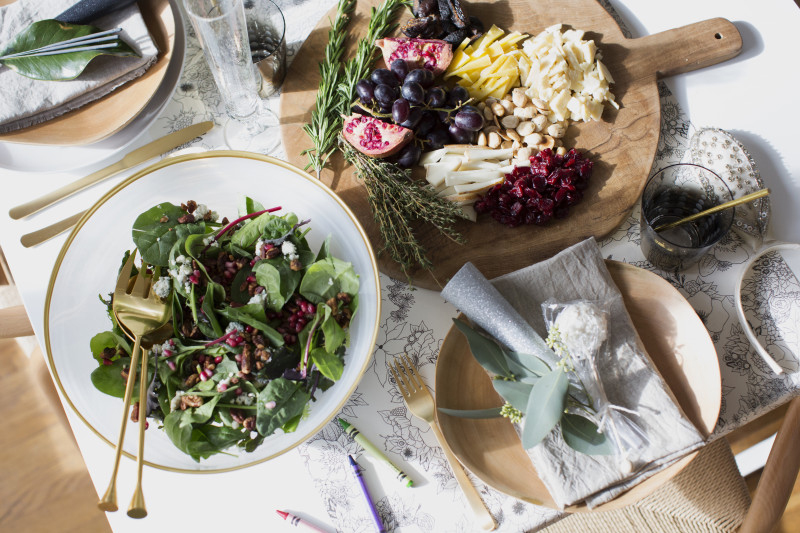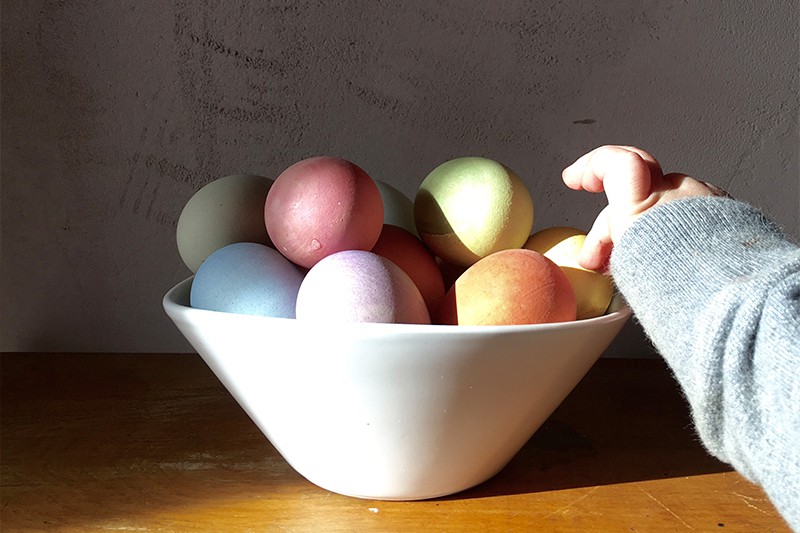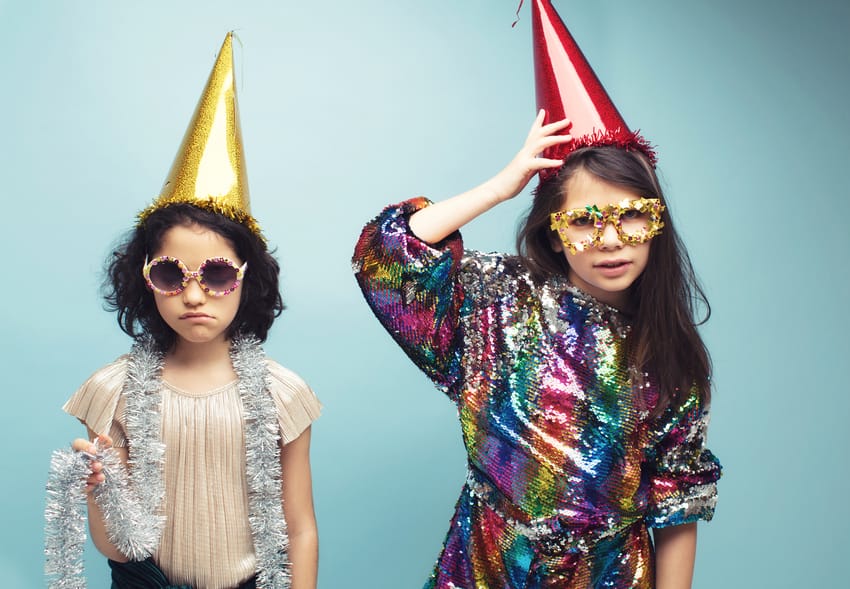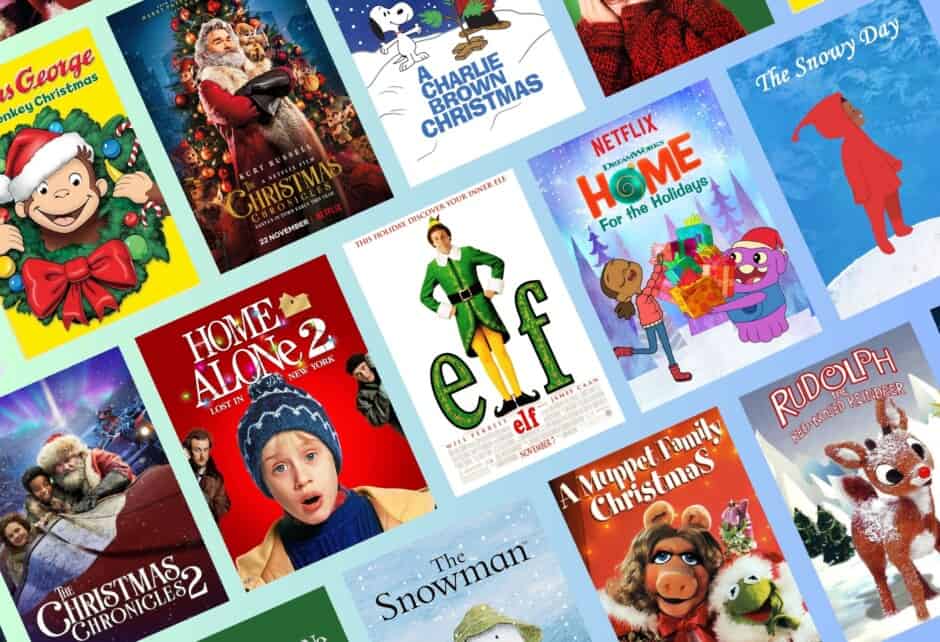
How To Talk To Your Kids About Thanksgiving
Written by Sara Langer
Photography by Photographed by James Kicinski-McCoy for Mother
With Thanksgiving less than 24 hours away, many Americans are preoccupied with preparations for tomorrow’s big feast or traveling to be with family and friends. While it is a wonderful time of year to reflect on what we are thankful for and enjoy pumpkin pie, how did we get here today? How did Thanksgiving come to be?
The story of Thanksgiving is one that is full of controversy, many of the facts suspiciously left out of the history books. As children we learned one version, but as adults, most of us have become aware that the story we were told of the first Thanksgiving and why we celebrate today is far from the truth. At the same time, we enjoy celebrating with loved ones and passing our traditions on to our own children.
As we see the current injustices happening in our country, we are reminded of the history that was white-washed to tell only one side of the story and we don’t want history to repeat itself. Many of us are wondering, how can we talk to our children about the reality of Thanksgiving, while still enjoying the idea of “thanks giving”? To help answer this question, we gathered the advice of a diverse group of experts on how to best broach this complex subject with our children. Read on for more insight.
Educate yourself first.
Most parents of young children have had to question the lessons of Thanksgiving they were taught during their childhood. The cheerful displays of pilgrims in black hats, coming off the Mayflower to share the land and a meal with “the Indians” is far from accurate. “The traditional Thanksgiving presents the U.S. history from one perspective, that of the European colonist and not the indigenous people who were living here for thousands of years,” says Debbie LeeKennan, one of the leaders of the anti-bias education movement. “We should provide our children with accurate information and the themes around Thanksgiving are opportunities for both parents and children to unlearn any stereotypes or inaccuracies in history.”
Even if you know that the way Thanksgiving is portrayed in most history books isn’t true, you might be asking yourself what did actually happen? Here’s the short story: There was a feast that happened in 1621 at Plimoth Plantation. The pilgrims, who referred to themselves as separatists at the time, were there, as well as members of the Wampanoag tribe. There are no first-hand written accounts that describe the tribe being invited to the celebration, but the assumption was made based on the knowledge that the Wampanoag had taught the settlers how to farm and they were most likely there at the time of harvest. The actual holiday of Thanksgiving was not declared until a couple hundred years later, by the colonist, as a way to unite the country during the civil war. In between, there was genocide, slavery, and disease that wiped out many of the existing tribes. This is just a snippet of the complex and often untold story of how Thanksgiving came to be. Parents need to do their research and make sure they have a better understanding of what actually happened before discussing any of it with their children.
Keep it age appropriate while still being accurate.
Once you are armed with more information, you need to decide what to share with your children and when. “I think Thanksgiving is such a complicated topic and it has such a harsh history,” says Charnaie Gordon, a diversity and inclusion expert and the blogger behind the site Here Wee Read. “As a parent with young children, I try to keep it very basic. We talk about thankfulness, gratitude, family, and food. I try to find books on any of those topics, as well as the Native American experience. I think as children get older you can introduce a little bit more and give them more information as it makes sense.”
To figure out where to start, first find out what your child already knows about Thanksgiving. “I would recommend that parents approach the topic from what the child already knows. What have they learned about Thanksgiving? What do they think about it? Then go from there,” suggests LeeKeenan. “Get their ideas and perspectives. You have an opportunity to provide alternative narratives and counteract any stereotypes they may have already learned.”
Educator, author, and motivational speaker J.R. Rivera remembers his first role in a school play in Kindergarten, “I was an Indian and I had the big bow and arrow, headdress, all of that stuff. And the pilgrims came and we had this big feast.” Now a father himself, Rivera doesn’t teach those same lessons to his students or his own children. “We need to be really transparent with the picture we are painting. With young children, I think the focus of Thanksgiving is about being thankful,” he says. Teaching young children about Thanksgiving doesn’t need to be focused on the “first” celebration, but rather the bigger picture of gratitude and coming together with people you love. “You can talk about pilgrims and Indians, but in an honest way. We shouldn’t paint a picture that isn’t accurate, because children can eventually do their own research,” says Rivera. “It takes away from the educational experience. When kids feel that they can’t trust what they’ve been taught early on, it really makes them question everything.” As children get older, you can build on these conversations. Keep the dialogue open and address some of the more difficult aspects of the history between the Native people and European settlers.
Know what’s happening in your child’s classroom and don’t be afraid to challenge it.
How Thanksgiving is addressed in the classroom differs from school to school and even among the teachers in the same schools. Most public schools, which need to adhere to state standards, are not provided with set curriculum around Thanksgiving. In this case, it is up to the individual teacher to address the holiday as they see fit. Some teachers may be taking a more progressive approach, while others may be stuck in the past. “I think the most important thing we have to pay attention to as educators is that we are not leading young minds into the same holes that we were put into,” says Rivera. “We have to be conscious that we control the culture, at least of our classroom. I often see the copycat syndrome, but it’s important to know that you don’t have to teach it like everyone else, that can be detrimental in the long run.”
Both Gordon and LeeKeenan encourage parents to find out what their children are learning in the classroom and to speak up if they don’t think what’s being presented is historically accurate or culturally sensitive. “If you have a question about what’s going on in your child’s classroom, it’s okay to speak with the teacher,” says LeeKeenan. “It’s your role as a parent to advocate for your child.” It may feel like you are stepping on the teacher’s toes, but LeeKeenan encourages parents to have those conversations, even if they may feel awkward. “For example, your child brings home a feathered headdress. You can ask the teacher about it, ask them how it was introduced, what was the purpose, give them a chance and hear what they have to say.” Gordon adds that parents should be prepared to offer alternatives. “I think a lot of times people get upset and they complain, but they don’t really explain fully why they are upset nor do they provide an alternative solution,” says Gordon, who explains that teachers may simply be unaware that what they are doing is offensive or inaccurate. “It’s all about education. When you know better, you do better. Sometimes people just aren’t aware. They are used to doing things the way they’ve always done them. Every year they follow the same lessons, not necessarily thinking about how things have evolved and changed,” she says.
Books are great teaching tools, but not necessarily when it comes to the history of Thanksgiving.
Books can be a great way to ease into a conversation about a convoluted topic, but be mindful that the books you choose are historically accurate. Once you have a better understanding of the true history of Thanksgiving, you will probably have a much more critical eye when it comes to how children’s books portray the story. Unfortunately, the list of truthful accounts of Thanksgiving, specifically from a Native American perspective, are few and far between.
If you want to use books as a teaching tool, find factual books about specific Native American tribes. One of the major problems with the traditional story of Thanksgiving and the Native American people is the homogenizing of all of the unique tribes into one idea and image of what a Native American is. A great place to start would be with the Wampanoag tribe, who taught the European settlers how to farm and were most likely there for the harvest that led to the celebration and so-called “first Thanksgiving.” You can go back further than that day in 1621 and discuss the people that lived on these lands for hundreds and thousands of years beforehand and what their lives were like.
There are other books that celebrate Native American tribes and how they give thanks in their culture, such as Giving Thanks: A Native American Morning Message by Chief Jake Swamp. The Very First Americans by Cara Ashrose is a simple book that is great for young children and provides an overview of several different Native American tribes. For older children, The People Shall Continue by Simon J Ortiz tells the story of the indigenous people of many different tribes from creation to the time of the invasion. Squanto’s Journey by Jake Bruchac is often recommended as an account of the first Thanksgiving from a Native American perspective, but be aware that the book leaves out a lot of the facts as well as the before and after of Squanto’s life.
Tie it into current events and keep the conversation going past November.
There is no shortage of inequity happening in our country today. In fact, Native Americans are still facing many injustices, as are many other groups here in the U.S. These are not easy topics to talk about, especially with children, but failing to address some of these major issues is similar to how we learned about Thanksgiving during our own childhood. We didn’t know the facts and now we are questioning why the history was censored. We want to make sure that history does not repeat itself.
“Some of my students are making the connections to the way people are being treated now in the United States,”says Rivera. “I have a large population of Hispanic students and some have relatives that are being deported. It’s real for them. Meanwhile, history painted this picture of Columbus and my students were really irate about that. They are asking, ‘Why are they lying to us? Why does that benefit us?’ That can get off topic very fast so you have to control that conversation, but being able to tie it back to what is going on now helps make it more relevant. You can ask them, how do you think the indigenous people felt when the Europeans started taking over and pushing them out of their own land? I think it can be hard to have conversations that are so emotionally driven, but it’s important.”
Talking about it with our children and empowering them to use their voice for good can help assure we don’t rewrite history to leave out all of the persecution and inequity once again. Help them to know they can make a difference in what is happening today and give them concrete ways they can give back. Do your research and decide how you can be an activist in a way that works for your family.
Focus on gratitude.
“I know a lot of people are upset about the whole history. There is a lot of anger and tension behind the true meaning of Thanksgiving. I personally don’t try and focus on that so much,” says Gordon. “Not to belittle the importance of it, but because my kids are not at the stage where I need to go into a lot of detail. To me, Thanksgiving is about family, it’s about being grateful, and it’s about good food. These are the things I try and focus on.”
Rivera also chooses to spotlight gratitude. “I think Thanksgiving is an awesome opportunity to have students think and reflect on what they are thankful for. We bring it home to today. What is going on today in your life? What does Thanksgiving mean to you? For older students, when you do the research what do you find and how does it make you feel? I want to allow my students to express how they feel about history, but I don’t want the focus on the negative aspects to take away from the joy of celebrating the season and enjoying time with family,” he says. “And talking about food, everyone loves talking about food! Allowing for those positive conversations is important too. I think these should supersede all of the conversations about the pilgrims and Native Americans, those can come when they are ready.”
Perhaps most importantly—during the Thanksgiving season and beyond—make sure you are always acknowledging and expressing your gratitude to the people that stood here on this land long before us. Lead by example, and your children will likely follow.
Share this story




